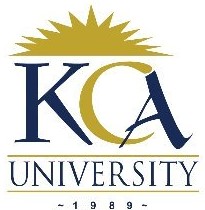 UNIVERSITY EXAMINATIONS: 2013/2014
UNIVERSITY EXAMINATIONS: 2013/2014
ORDINARY EXAMINATION FOR THE BACHELOR OF SCIENCE
IN INFORMATION TECHNOLOGY
BIT 3202A DISTRIBUTED DATABASES
DATE: AUGUST, 2014 TIME: 2 HOURS
INSTRUCTIONS: Answer Question ONE and any other TWO
QUESTION ONE
a) Discuss using examples the benefits provided by Distributed Database Systems
(10 Marks)
b) Describe the different approaches used in a database reference model. (12 Marks)
c) Discuss the correctness rules for fragmentation highlighting the different types of
fragmentation. (8 Marks)
QUESTION TWO
a) A Distributed DBMS may have a number of local applications, but it has at least
one global application. Describe features of a distributed DBMS: (10 Marks)
b) A Distributed DBMS controls the storage and efficient retrieval of logically
interrelated data that are physically distributed among several sites. Discuss the
components of a distributed DBMS. (10 Marks)
QUESTION THREE
a) In a distributed system, data may be fragmented, and each fragment can have a
number of replicas to increase data availability and reliability. Discuss the
objectives that must be considered while designing the fragmentation and
allocation of these fragments to different sites in a distributed system.
(10 Marks)
b) Using examples, describe concurrence control anomalies. (10 Marks)
QUESTION FOUR
a) Discuss the various types of failure that may occur in distributed database
management systems. (6 Marks)
b) Using examples, explain different deadlock management techniques to handle
deadlock situations in a distributed database system. (9 Marks)
c) Explain three important factors that involved in design and implementation of the
distributed database system. (5 Marks)
QUESTION FIVE
Discuss using illustrations the following architectures
a) Peer-to-Peer Architecture for DDBMS (Data-based) (6 Marks)
b) Multi-DBMS Architecture (Data-based) ( 6 Marks)
c) ANSI/SPARC architecture of a DBMS (8 Marks)
